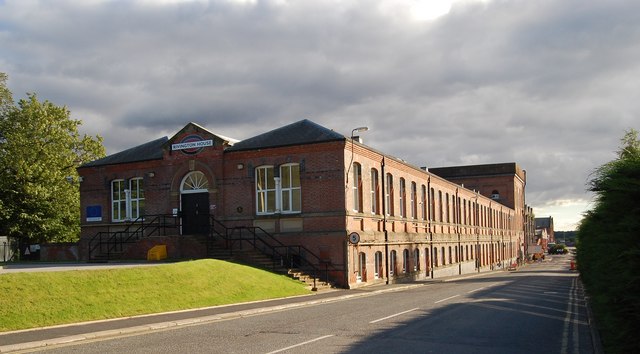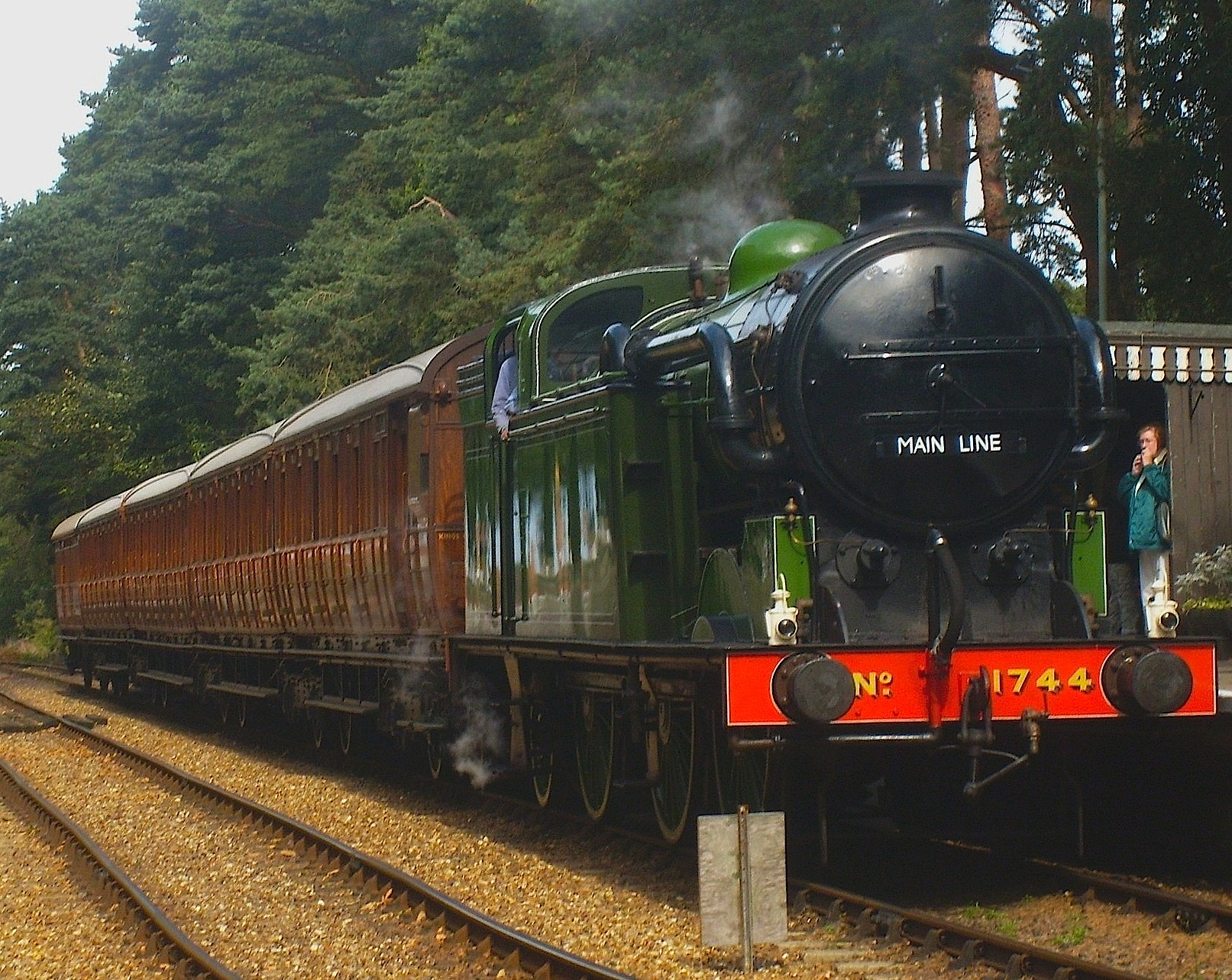|
BR Standard Class 4 2-6-0 76084
BR Standard Class 4 2-6-0 76084 is a BR Standard Class 4 2-6-0 locomotive built at Horwich in March 1957. Owned by ''The 76084 Locomotive Company Limited'' it is one of only four surviving members of its class in preservation. British Railways service 76084 was outshopped from Horwich Works on 28 March 1957. Designed with a light axle-loading of only 16 tons, this meant that the BR Standard 4's route availability of RA4 was unrestricted and was able to work on all regions throughout Great Britain. Batches of the class were allocated to every region except the Western. Like most of the class, the BR2A tender was fitted. This had a narrower upper bunker, giving better visibility when running tender-first. Class members allocated to the Southern region had the more capacious full-width BR1B tender, as the extra tank capacity was needed with the absence of water troughs on the Southern. From new 76084 was allocated to Lower Darwen in March 1957 alongside siblings 76080/1/2 and 3, ... [...More Info...] [...Related Items...] OR: [Wikipedia] [Google] [Baidu] |
Horwich Works
Horwich Works was a railway works built in 1886 by the Lancashire and Yorkshire Railway (LYR) in Horwich, near Bolton, in North West England when the company moved from its original works at Miles Platting, Manchester. Buildings Horwich Works was built on of land bought in April 1884 for £36,000. Rivington House, the first of several workshops was long by wide and opened in February 1887. The long brick built workshops had full-height arched windows and were separated by tram and rail tracks. Work to construct the three bay, long by wide, erecting shop began in March 1885. Inside were 20 overhead cranes. An gauge railway, with approximately of track was built to carry materials around the works complex, modelled on a similar system at Crewe Works. Two small 0-4-0 tank locomotives were bought from Beyer, Peacock and Company in 1887 to haul stores trains around the site, and six more were acquired at intervals to 1901. The first of these was bought from Beyer Peacock, bu ... [...More Info...] [...Related Items...] OR: [Wikipedia] [Google] [Baidu] |
Primer (paint)
A primer () or undercoat is a preparatory coating put on materials before painting. Priming ensures better adhesion of paint to the surface, increases paint durability, and provides additional protection for the material being painted. Composition A primer consists of synthetic resin, solvent and additive agent while some primers contain polyethylene (plastic), for better durability. Use Primer is a paint product that allows finishing paint to adhere much better than if it were used alone. It is designed to adhere to surfaces and to form a binding layer that is better prepared to receive the paint. Compared to paint, a primer is not intended to be used as the outermost durable finish and can instead be engineered to have improved filling and binding properties with the material underneath. Sometimes this is achieved by chemistry, as in the case of aluminum primer, but more often this is achieved through controlling the primer's physical properties such as its porosity, tackiness ... [...More Info...] [...Related Items...] OR: [Wikipedia] [Google] [Baidu] |
Standard Gauge Steam Locomotives Of Great Britain
Standard may refer to: Symbols * Colours, standards and guidons, kinds of military signs * Standard (emblem), a type of a large symbol or emblem used for identification Norms, conventions or requirements * Standard (metrology), an object that bears a defined relationship to a unit of measure used for calibration of measuring devices * Standard (timber unit), an obsolete measure of timber used in trade * Breed standard (also called bench standard), in animal fancy and animal husbandry * BioCompute Standard, a standard for next generation sequencing * ''De facto'' standard, product or system with market dominance * Gold standard, a monetary system based on gold; also used metaphorically for the best of several options, against which the others are measured * Internet Standard, a specification ratified as an open standard by the Internet Engineering Task Force * Learning standards, standards applied to education content * Standard displacement, a naval term describing the weig ... [...More Info...] [...Related Items...] OR: [Wikipedia] [Google] [Baidu] |
Individual Locomotives Of Great Britain
An individual is that which exists as a distinct entity. Individuality (or self-hood) is the state or quality of being an individual; particularly (in the case of humans) of being a person unique from other people and possessing one's own needs or goals, rights and responsibilities. The concept of an individual features in diverse fields, including biology, law, and philosophy. Etymology From the 15th century and earlier (and also today within the fields of statistics and metaphysics) ''individual'' meant " indivisible", typically describing any numerically singular thing, but sometimes meaning "a person". From the 17th century on, ''individual'' has indicated separateness, as in individualism. Law Although individuality and individualism are commonly considered to mature with age/time and experience/wealth, a sane adult human being is usually considered by the state as an "individual person" in law, even if the person denies individual culpability ("I followed instruct ... [...More Info...] [...Related Items...] OR: [Wikipedia] [Google] [Baidu] |
Preserved British Railways Standard Steam Locomotives
Preservation may refer to: Heritage and conservation * Preservation (library and archival science), activities aimed at prolonging the life of a record while making as few changes as possible * ''Preservation'' (magazine), published by the National Trust for Historic Preservation * Historic preservation, endeavor to preserve, conserve and protect buildings, objects, landscapes or other artifacts * Conservation and restoration of cultural heritage, protection and care of tangible cultural heritage Mathematics and computer science * Type preservation, property of a type system if evaluation of expressions does not cause their type to change * Case preservation, when computer storage preserves the distinction between upper and lower case * Digital preservation, endeavor to ensure that digital information of continuing value remains accessible and usable Arts and entertainment * ''Preservation'' (2018 novel), historical fiction by Jock Serong about the wreck of the '' Sydney ... [...More Info...] [...Related Items...] OR: [Wikipedia] [Google] [Baidu] |
North Norfolk Railway
The North Norfolk Railway (NNR) – also known as the "Poppy Line" – is a heritage steam railway in Norfolk, England, running between the towns of Sheringham and Holt. The North Norfolk Railway is owned and operated as a public limited company, originally called Central Norfolk Enterprises Limited. The railway is listed as exempt from the UK Railways (Interoperability) Regulations 2000. History Route history The line once formed part of the Midland and Great Northern Joint Railway's Melton Constable to Cromer Beach branch line. The first section, from Melton to Holt, was opened on 1 October 1884. After a suspension of work, the Holt to Cromer section of line was completed by direct labour, and opened on 16 June 1887. A through Kings Cross to Cromer express started running in August 1887, and although the construction had been expensive, the boost to revenue from the new line was considerable. A second train was put on the following year, in the down direction cons ... [...More Info...] [...Related Items...] OR: [Wikipedia] [Google] [Baidu] |
LMS Jubilee Class 5690 Leander
London, Midland and Scottish Railway (LMS) Jubilee Class No. 5690 (BR No. 45690) ''Leander'' is a preserved British steam locomotive. Operational history 5690 was built at Crewe in March 1936 and named ''Leander'' after HMS ''Leander'', which in turn was named after the Greek hero Leander. From March 1936 it was based at Crewe North shed where it remained until 1947 when it was transferred to the former LMS engine shed at Bristol (Barrow Road). After nationalisation in 1948, it was renumbered 45690 by British Railways. After being withdrawn in 1964, ''Leander'' was sold to Woodham Brothers scrapyard in Barry, South Wales. Preservation Rescued by Brian Oliver in May 1972, it was restored by the Leander Locomotive Society at Derby and later kept at the Dinting Railway Museum, Glossop. After later purchase by and running on the Severn Valley Railway, ''Leander'' was sold to Dr Peter Beet, and restored to running condition on the East Lancashire Railway in LMS Crimson ... [...More Info...] [...Related Items...] OR: [Wikipedia] [Google] [Baidu] |
GSM-R
GSM-R, Global System for Mobile Communications – Railway or GSM-Railway is an international wireless communications standard for railway communication and applications. A sub-system of European Rail Traffic Management System (ERTMS), it is used for communication between train and railway regulation control centers. The system is based on GSM and ''EIRENE – MORANE'' specifications which guarantee performance at speeds up to 500 km/h (310 mph), without any communication loss. GSM-R could be supplanted by LTE-R, with the first production implementation being in South Korea. However, LTE is generally considered to be a " 4G" protocol, and the UIC's Future Railway Mobile Communication System (FRMCS) program is considering moving to something " 5G"-based (specifically 3GPP R15/16), thus skipping two technological generations. History GSM-R is built on GSM technology, and benefits from the economies of scale of its GSM technology heritage, aiming at being a cost ... [...More Info...] [...Related Items...] OR: [Wikipedia] [Google] [Baidu] |
On-train Monitoring Recorder
A train event recorder – also called On-Train Monitoring Recorder (OTMR), On-Train Data Recorder (OTDR), Event Recorder System (ERS), Event Recorder Unit (ERU), or simply Event Recorder (ER) – is a device that records data about the operation of train controls, the performance of the train in response to those controls, and the operation of other train control systems. It is similar to the flight data recorder found on aircraft. Functions Because event recorders are integrated with most car-borne systems, they are an attractive target for enhanced diagnostic and control functions. Some event recorders feature outputs controlling penalty braking or emergency braking systems, as well as speedometers. Data storage can be provided by magnetic tape, battery-backed RAM and, more recently, non-volatile EEPROM or flash memory, overwritten in a FIFO continuous loop. The data is intended for use in the investigation of accidents and other incidents, but is also used to monitor ... [...More Info...] [...Related Items...] OR: [Wikipedia] [Google] [Baidu] |
Train Protection & Warning System
The Train Protection & Warning System (TPWS) is a train protection system used throughout the British passenger main-line railway network, and in Victoria, Australia. The British Rail Safety and Standards Board's definition is: The purpose of TPWS is to stop a train by automatically initiating a brake demand, where TPWS track equipment is fitted, if the train has: *passed a signal at danger without authority *approached a signal at danger too fast *approached a reduction in permissible speed too fast *approached buffer stops too fast. TPWS is not designed to prevent SPADs but to mitigate the consequences of a SPAD, by preventing a train that has had a SPAD from reaching a conflict point after the signal. A standard installation consists of an on-track transmitter adjacent to a signal, activated when the signal is at danger. A train that passes the signal will have its emergency brake activated. If the train is travelling at speed, this may be too late to stop it before the point ... [...More Info...] [...Related Items...] OR: [Wikipedia] [Google] [Baidu] |
Morpeth, Northumberland
Morpeth is a historic market town in Northumberland, North East England, lying on the River Wansbeck. Nearby towns include Ashington, Northumberland, Ashington and Bedlington, Northumberland, Bedlington. In the United Kingdom Census 2011, 2011 census, the population of Morpeth was given as 14,017, up from 13,833 in the United Kingdom Census 2001, 2001 census. The earliest evidence of settlement is believed to be from the Neolithic period, and some Roman artifacts have also been found. The first written mention of the town is from 1080, when the de Merlay family was granted the barony of Morpeth. The meaning of the town's name is uncertain, but it may refer to its position on the road to Scotland and a murder which occurred on that road. The de Merlay family built two castles in the town in the late 11th century and the 13th century. The town was granted its coat of arms in 1552. By the mid 1700s it had become one of the main markets in England, having been granted a market charte ... [...More Info...] [...Related Items...] OR: [Wikipedia] [Google] [Baidu] |
Nottinghamshire
Nottinghamshire (; abbreviated Notts.) is a landlocked county in the East Midlands region of England, bordering South Yorkshire to the north-west, Lincolnshire to the east, Leicestershire to the south, and Derbyshire to the west. The traditional county town is Nottingham, though the county council is based at County Hall in West Bridgford in the borough of Rushcliffe, at a site facing Nottingham over the River Trent. The districts of Nottinghamshire are Ashfield, Bassetlaw, Broxtowe, Gedling, Mansfield, Newark and Sherwood, and Rushcliffe. The City of Nottingham was administratively part of Nottinghamshire between 1974 and 1998, but is now a unitary authority, remaining part of Nottinghamshire for ceremonial purposes. The county saw a minor change in its coverage as Finningley was moved from the county into South Yorkshire and is part of the City of Doncaster. This is also where the now-closed Doncaster Sheffield Airport is located (formerly Robin Hood Airport). In 20 ... [...More Info...] [...Related Items...] OR: [Wikipedia] [Google] [Baidu] |





